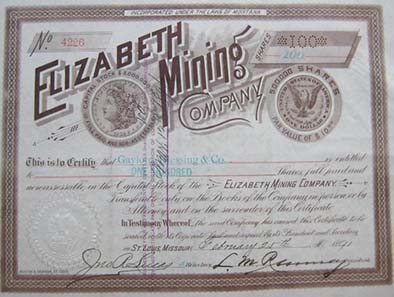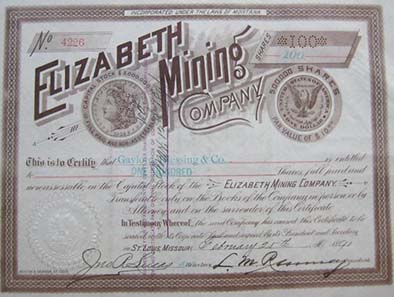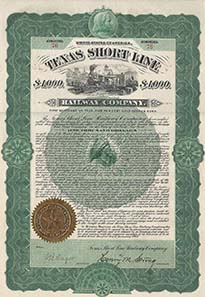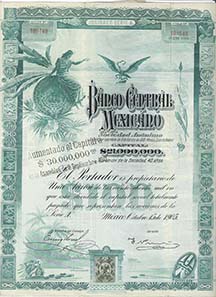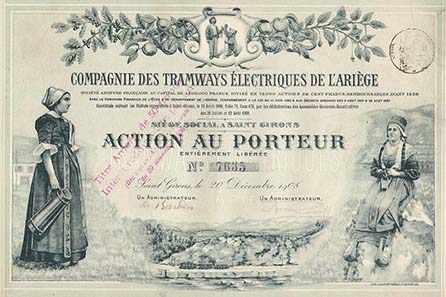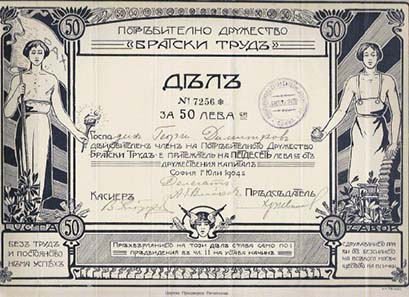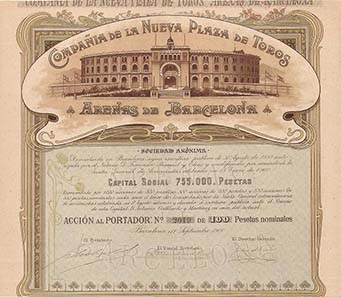December 29, 2010 – Wikipedia says “scripophily is a specialized field of numismatics”. I initially disagreed to that. I thought of the term numismatics in the narrow sense in which a numismatist is a person who collects coins. Others like Wikipedia interpret the term in a broad sense. Here, a numismatist is a collector of coins, paper money, tokens, and related objects such as antique shares and bond certificates. By the way, a collector only collecting paper money is a notaphilist.
Similarties and differences
My name is Franky and I’m running a blog about Scripophily, which is about collecting antique share and bond certificates. In this article, I point out some differences and similarities that exist between coin collecting and scripophily. Without pretending to be complete, I picked out 3 similarities and 3 differences.
Similarities
* research
* eBay, dealers, auctions & clubs
* themes
Differences
* varieties
* grading & rarity
* catalogues
Research
Coins can be researched and so can scripophily items. I find myself often carried away when researching the history behind a certificate. Research involves determining:
* if the certificate is already known or not,
* what the purpose for the issue was,
* what the activity of the involved organization was,
* what the historical significance is,
* who issued, signed or owned the document,
* what artistic features are present.
Often remarkable histories come to the surface. Fair warning: if you do not want to become a scripophily collector, then do not research certificates as it is quiet catching.
Where to obtain certificates?
Just like coins, shares and bonds can be purchased on Internet platforms, like eBay, where you’ll find a lot of common material. The more valuable items can be purchased at specialized dealers and at auctions. Often the auctioneers organize a show or bourse with the auction event. This is a situation not different from numismatics.
Prices may vary from 10 pieces for 1 Euro to tens of thousands of Euros for a single piece sold at an auction.
Are there clubs and organizations? Not all countries dispose of scripophily clubs, but most typical “collector countries” do. There is an international organization: the International Bond and Share Society (IBSS). Several times a year IBSS publishes its Scripophily journal. Its membership is worth every penny.
Themes
I can hardly imagine that someone is actually collecting all coins of the world. The same applies to scripophily. A novice – I was one – typically tries to collect everything he finds. But soon, after becoming more experienced, the advanced collector decides to focus on one or more themes. Many themes are possible:
* geographical: e.g. Egypt, Skandinavia, Berlin
* a historical period: e.g. 18th century, Tsaristic Russia, Deutsch Mark certificates
* an activity: gold mining, railways, shipping
* an art style: Jugendstil, Art Deco
* a person: artists, engravers, pioneers, inventors or business tycoons
* a printing house: Waterlow & Sons, American Banknote Company
* a visual theme: maps, flags, and, oh yes coins
Collectors often combine themes: French casino’s, Russion banks, American oil companies
These were some similarities. There are also differences.
Varieties
Many coins are known in varieties (e.g. an extra letter ‘A’ in the design). Such varieties also exist with shares and bonds. However, these varieties do not result in a higher value and certainly do not get that much of attention.
Condition grading & rarity
Grading terms like UNCIRCULATED (UNC), VERY FINE (VF), etc are often used in auction catalogues. However, these are not unambiguously determined and are not consistently applied. 99% of the certificates seen show signs of usage and could be categorized in the VF- to VF+ range.
In terms of numismatic rarity, all certificates are scarce and many of them rare. Where many coins are known with mintages of tens or hundreds of millions of pieces, this is not the case with stocks and bonds. Many ‘common’ certificates were issued in quantities of several thousands. But even much more certificates have been issued in smaller quantities like a few hundred or even less. That is why shares or bonds, though in average or less good condition, can fetch high prices.
Putting it together, a lot less certificates are available than is the case with coins, which reduces the price differences for different grading conditions.
Catalogues
Coin catalogues are normally published for a country containing the coins of that country. Also thick volumes are published targeting all coins of the world. Publishing a scripophily catalogue for all certificates of a country would be impossible to do in most cases. An example, hundreds of thousands of companies have issued certificates in Belgium. Listing up all known certificates and varieties would be a titanic job. Yet, there are catalogues that focus on one country, but these contain only a fraction of the known certificates. In Scripophily world, most catalogues deal with a combination of themes, e.g. Belgian Shipping.
Both coins and scripophily items have their own typical features that cannot be compared. Just to mention a few typical scripophily features: color printing, printing technique, seals, personal touch (issued to, signed by) and watermarks. You’ve probably made the conclusion by yourself: this is a whole exciting world to discover. Why don’t you drop in on Franky’s Scripophily Blogspot?
Franky Leeuwerck
If you want to visit Franky’s Scripophily BlogSpot, click here.
If you want to go directly to his numismatic themes on shares and bonds featuring coins, click here.
If you want to know more about the Scripophily Society, click here.




